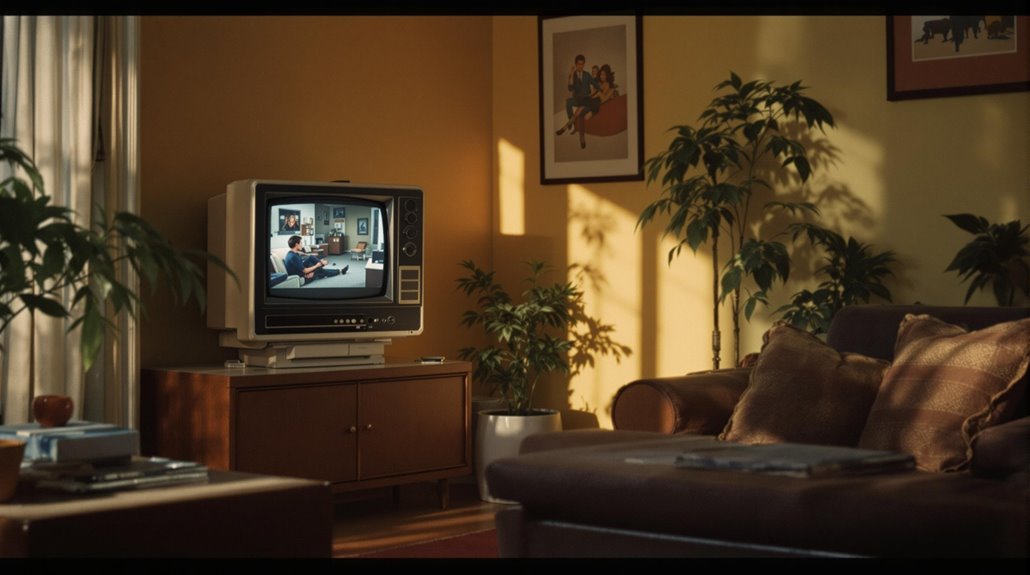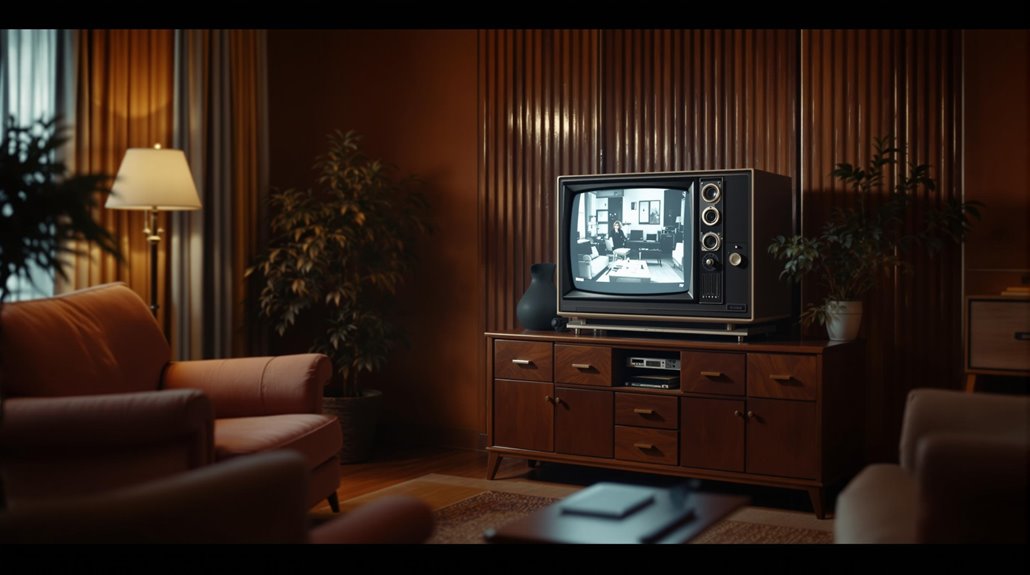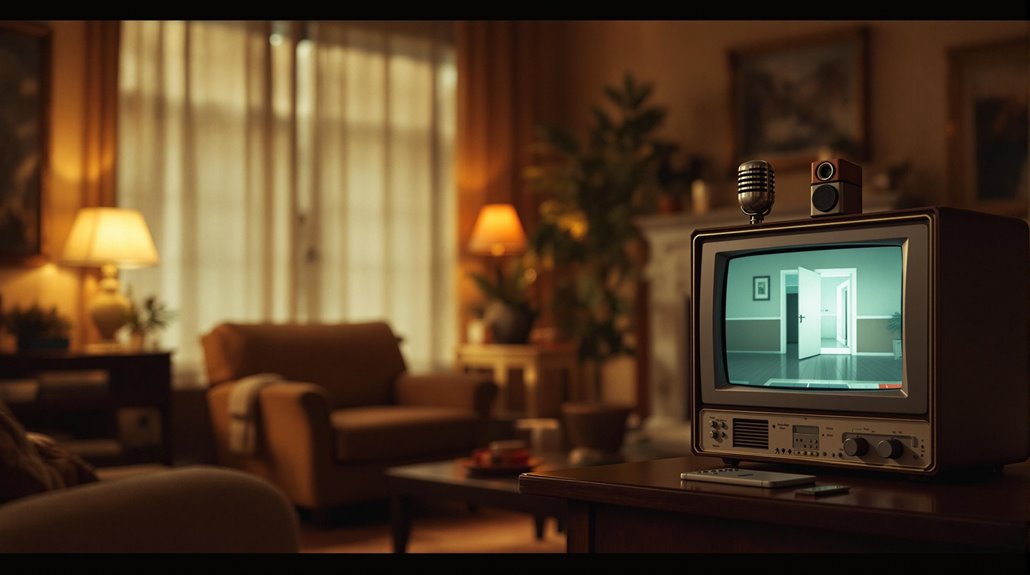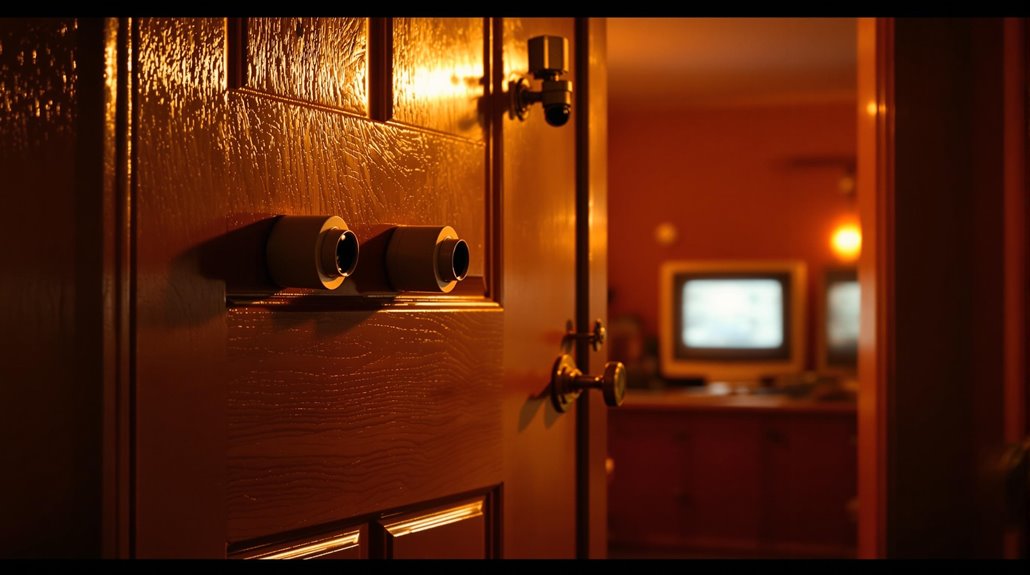Marie Van Brittan Brown: How One Woman’s Home Security System Became Today’s CCTV
Imagine walking home late at night in 1960s Queens, New York, where crime rates have spiked and police response times can stretch for hours. That's exactly what Marie Van Brittan Brown faced as a nurse working irregular shifts, which led her to devise an ingenious solution. You've probably used modern security cameras or video doorbells, but you might not know that these everyday devices trace their DNA back to one woman's determination to protect her family in an unsafe neighborhood.
The Birth of a Revolutionary Idea

While crime rates surged in 1960s Queens, New York, Marie Van Brittan Brown's innovative spirit emerged from necessity. As a nurse working irregular hours in a high-crime neighborhood, you can imagine her growing concern for social safety when police response times weren't meeting community needs.
The 32% spike in serious crimes between 1960 and 1965 only intensified her worries about being home alone. She recognized the critical need for a security solution after noticing slow police responses in emergencies. Living with her husband Albert Brown as an electronics technician helped shape her technical vision.
In 1966, Brown's inspired innovation took shape when she collaborated with her husband Albert, an electronics technician. Together, they envisioned a groundbreaking home security system that would incorporate closed-circuit television technology.
Their solution wasn't just about protection – it was about empowering residents to monitor and communicate with visitors remotely, revolutionizing how you'd approach home security in the modern era.
Building the First Home Security System
As Marie and Albert Brown sketched out their revolutionary security system, they focused on creating an integrated network of innovative components. They installed four peepholes at varying heights, connecting them to a sliding camera that transmitted images to indoor television monitors. The addition of two-way microphones enabled direct communication with visitors, while a remote control allowed for convenient door access. Living in a neighborhood plagued by high crime rates motivated their pioneering invention. As a dedicated nurse working shifts, Marie understood firsthand the importance of feeling secure at odd hours.
Despite the innovation challenges they faced, the Browns persevered in developing this extensive security solution. Their system marked a significant step in security evolution, featuring groundbreaking elements like CCTV monitoring and radio-controlled alarms to alert authorities.
While the high installation costs initially prevented widespread production, their 1969 patent laid the foundation for modern home security technology. The system's influence extended beyond residential use, inspiring security measures in commercial buildings nationwide.
Key Features That Changed Home Safety
Marie Van Brittan Brown's home security system introduced four groundbreaking features that revolutionized residential safety.
Her innovative technology transformed how you can monitor and protect your home, establishing the foundation for modern security systems. As a nurse working late, Brown understood firsthand the need for better home protection.
The key components that enhanced surveillance and safety include:
- A motorized CCTV camera that slides between peepholes, allowing you to view visitors of any height through your TV monitor
- A two-way communication system with microphone and speaker that lets you safely interact with visitors from inside
- Remote-controlled door locks that enable you to grant or deny access from a safe distance
- An emergency alert system connected directly to police via radio for immediate response to threats
These features fundamentally changed home security, making it more interactive, efficient, and reliable for homeowners.
From Patent to Industry Recognition
Following her innovative development, Brown's journey to recognition began with her 1966 patent application for the "Home Security System Utilizing Television Surveillance." The groundbreaking filing made history when it received approval in December 1969, becoming the first home security system patent ever issued.
Despite patent challenges and initial skepticism, The New York Times helped bring attention to Brown's invention through coverage and interviews, highlighting its potential impact on women's safety and medical offices. Her system's innovative four peep holes offered comprehensive viewing angles for enhanced security monitoring.
While media influence was brief, ending after the patent announcement, her work's significance grew steadily over decades. The National Scientists Committee honored her achievements, and her patent has been cited in 32 subsequent applications.
You'll find Brown's influence extending well beyond her time, as her system laid the foundation for modern CCTV surveillance and smart home security technology.
Shaping Modern Security Technology

Through her pioneering home security system, Brown's innovative features continue shaping today's surveillance technology.
Her security innovation laid the groundwork for modern smart home systems, transforming from basic CCTV to sophisticated digital networks.
The technology evolution from Brown's original design to current systems shows remarkable advancement in four key areas:
- Two-way communication evolved into smart video doorbells with HD audio and video
- Simple peepholes developed into AI-powered cameras with facial recognition
- Manual door controls transformed into smartphone-operated smart locks
- Basic CCTV monitoring expanded into extensive cloud-based surveillance
You'll find Brown's influence in nearly every modern security device, from wireless cameras to integrated home systems. The advancement of digital video recorders in the mid-1990s further revolutionized how surveillance footage could be stored and reviewed. The multiplexing technology introduced in the 1990s enabled viewing multiple camera feeds simultaneously on a single screen.
Her vision of homeowner-controlled surveillance has become the standard for residential security, empowering you to monitor and protect your space remotely.
The Lasting Impact on CCTV Development
The evolution of CCTV technology stands as a demonstration to Brown's revolutionary home security system. You'll find her influence throughout the industry's major technological advancements, from the shift to digital systems in the 1990s to today's AI-integrated surveillance solutions.
Her patent has been referenced in 35 subsequent U.S. patents, helping shape a market that reached $45.5 billion by 2020.
While Brown's innovations have led to significant improvements in public safety and crime reduction, they've also sparked important discussions about privacy concerns. Brown's initial motivation stemmed from high crime rates in her Queens neighborhood. The groundbreaking approach of using motion picture technology for surveillance followed earlier developments in photography and video recording.
Today's CCTV systems, featuring cloud storage, remote access, and facial recognition capabilities, continue to build upon her foundational concepts. You can trace modern video doorbell systems and wireless security technology directly back to Brown's pioneering combination of cameras, two-way audio, and remote-controlled access.










